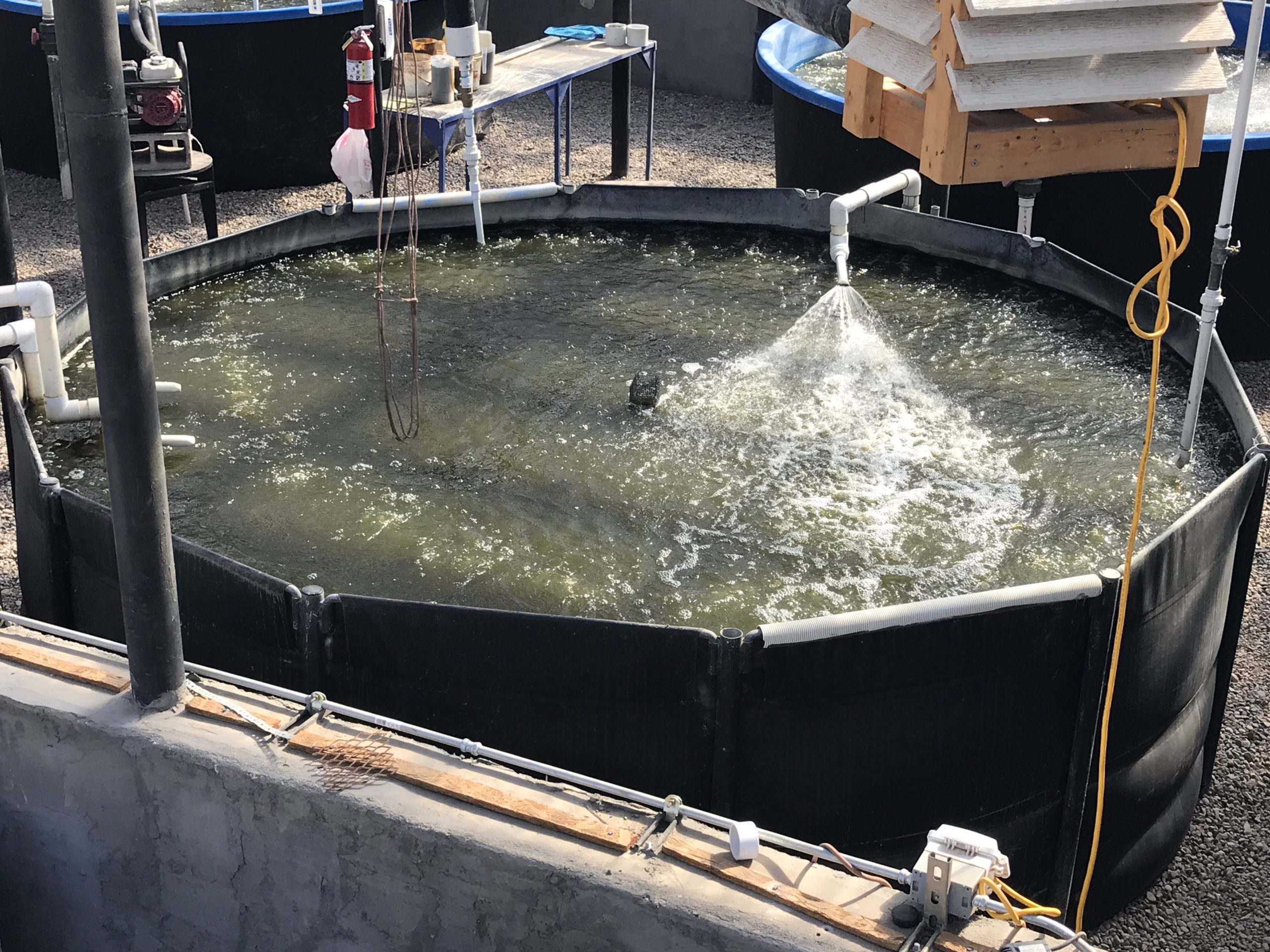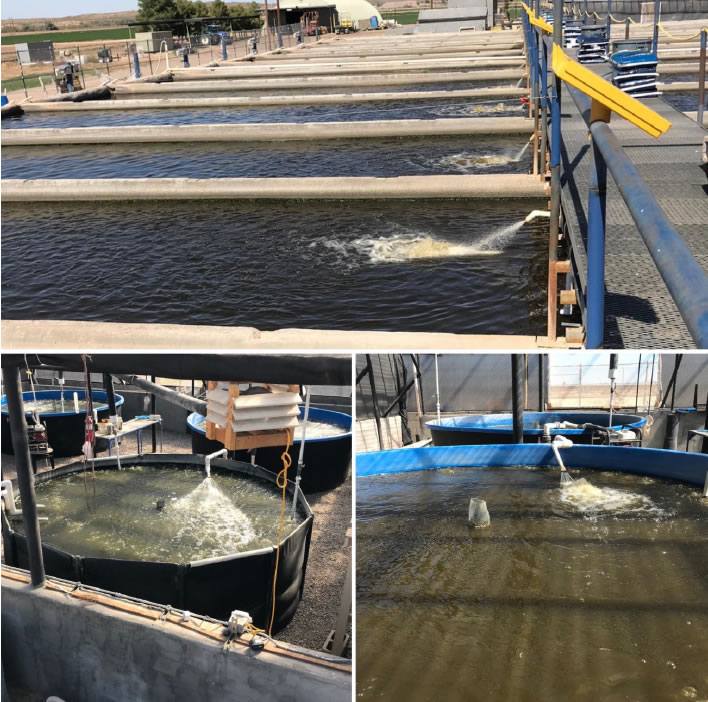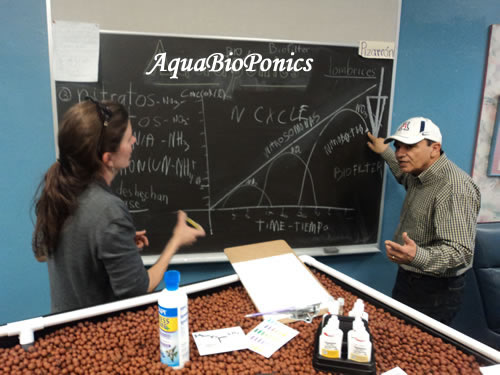Contents
- 1 A comparison of two approaches to farming fish and other aquatic organisms that aim to minimize environmental impacts and maximize social benefits
- 2 Prof. Aécio D’Silva, Ph.D AquaUniversity
- 3 What is organic aquaculture?
- 4
- 5 What is sustainable aquaculture?
- 6 How do organic and sustainable aquaculture compare?
- 7
- 8 Why does it matter?
- 9 Examples of organic and sustainable aquaculture practices?
- 10 Some of the challenges of organic and sustainable aquaculture practices are:
- 11
- 12 Nutrient cycling and waste management in organic and sustainable aquaculture practices
- 13 How do we promote the adoption of organic and sustainable aquaculture in different regions?
- 14 Educating and Promoting Organic and Sustainable Aquaculture with AquaBioPonics Micro-Systems
Prof. Aécio D’Silva, Ph.D
AquaUniversity
Organic vs Sustainable aquaculture – Aquaculture, the cultivation of fish and other aquatic organisms, is one of the fastest-growing food production sectors in the world, providing food, income, and livelihoods for millions of people. However, aquaculture also poses various environmental and social challenges, such as water pollution, habitat degradation, disease outbreaks, and human rights violations. To address these challenges, different approaches to aquaculture have emerged, such as organic and sustainable aquaculture. But what are the differences between these two approaches, and why do they matter for consumers, producers, and the planet?
What is organic aquaculture?
Organic aquaculture is a holistic method for farming fish and other aquatic organisms in line with organic principles. The ideals of this practice established sustainable marine environments with consideration for naturally occurring ecosystems, the use of pesticides, and the treatment of aquatic life [1]. Organic aquaculture follows specific standards and regulations that vary by country and region, but generally include the following criteria. [2]:
- Feed: Organic aquaculture uses organic feed that is free of genetically modified organisms (GMOs), synthetic chemicals, antibiotics, and hormones. The feed should also contain a minimum amount of fishmeal and fish oil from wild fisheries and a maximum amount of plant-based ingredients from organic sources.
- Stocking density: Organic aquaculture limits the number of fish or other organisms per unit of water or space, to avoid overcrowding, stress, and disease. The stocking density should also allow for the natural behavior and movement of the organisms.
- Water quality: Organic aquaculture maintains high water quality by using natural or mechanical methods of filtration, aeration, and circulation. The water should also be free of pollutants, such as heavy metals, pesticides, and antibiotics.
- Health management: Organic aquaculture prevents and treats diseases and parasites by using natural or organic methods, such as vaccination, herbal remedies, and biological control. The use of synthetic chemicals, antibiotics, and hormones is prohibited or restricted.
- Environment: Organic aquaculture minimizes the environmental impact of the farming operation by using renewable energy sources, reducing waste and emissions, and preserving the natural habitat and biodiversity of the surrounding ecosystem.
- Social: Organic aquaculture respects the human rights and welfare of the workers and the local communities involved in the production, processing, and marketing of the products. The workers should receive fair wages, safe working conditions, and opportunities for training and development. The local communities should benefit from the economic, social, and environmental aspects of the operation.
What is sustainable aquaculture?
Sustainable aquaculture is a broad term that refers to any aquaculture practice that aims to produce food, fiber, and fuel in a way that meets the needs of the present without compromising the ability of future generations to meet their own needs [3]. Sustainable aquaculture encompasses various aspects of environmental, social, and economic sustainability, such as:
- Environmental sustainability: Sustainable aquaculture reduces the environmental impact of farming operations by using efficient and responsible methods of feed, water, energy, and waste management, as well as protecting the natural habitat and biodiversity of the surrounding ecosystem.
- Social sustainability: Sustainable aquaculture enhances the social well-being of the workers and the local communities involved in the production, processing, and marketing of the products, by ensuring fair and ethical labor practices, human rights, food security, and community development.
- Economic sustainability: Sustainable aquaculture ensures the economic viability and profitability of the farming operation, by using cost-effective and innovative methods of production, processing, and marketing, as well as adapting to changing market demands and consumer preferences.
How do organic and sustainable aquaculture compare?
Organic and sustainable aquaculture share some common goals and principles, such as minimizing environmental impacts, maximizing social benefits, and ensuring economic viability. However, they also differ in some respects, such as:
- Scope: Organic aquaculture is a specific type of sustainable aquaculture that follows strict and standardized rules and regulations, while sustainable aquaculture is a general and flexible concept that can be applied to different types and scales of aquaculture practices.
- Certification: Organic aquaculture requires third-party certification by accredited agencies or organizations, which verify and monitor the compliance of the production, processing, and marketing of the products with the organic standards and regulations, while sustainable aquaculture can be self-assessed or verified by various voluntary schemes or initiatives, such as eco-labels or best management practices.
- Market: Organic aquaculture targets a niche market of consumers who are willing to pay a premium price for organic products, which are perceived as healthier, safer, and more ethical, while sustainable aquaculture targets a broader market of consumers who are interested in the environmental, social, and economic aspects of the products, but are also sensitive to the price, quality, and availability of the products.
Why does it matter?
The choice between organic and sustainable aquaculture matters for different stakeholders, such as:
- Consumers: Consumers can choose between organic and sustainable aquaculture products based on their personal preferences, values, and budget. Organic products may offer higher assurance of health, safety, and ethics, while sustainable products may offer more variety, affordability, and accessibility.
- Producers: Producers can choose between organic and sustainable aquaculture practices based on their production goals, resources, and challenges. Organic practices may offer higher market value, consumer loyalty, and environmental benefits, while sustainable practices may offer more flexibility, innovation, and adaptation.
- Planet: The planet can benefit from both organic and sustainable aquaculture practices, as they can contribute to the conservation of natural resources, protection of the environment, enhancement of human health, and ensuring of food security.
Examples of organic and sustainable aquaculture practices?
Organic and sustainable aquaculture are two approaches to farming fish and other aquatic organisms that aim to minimize environmental impacts and maximize social benefits. Organic aquaculture follows specific standards and regulations that are certified by third-party agencies, while sustainable aquaculture follows general and flexible principles that are verified by various voluntary schemes. [4]
Some examples of organic and sustainable aquaculture practices are:
- Organic shrimp farming in Thailand: This practice uses organic feed, low stocking density, natural water treatment, and no synthetic chemicals or antibiotics. It also preserves the mangrove forests and supports the local communities. [5]
- Sustainable salmon farming in Chile: This practice uses efficient and responsible methods of feed, water, energy, and waste management, as well as protecting the natural habitat and biodiversity of the surrounding ecosystem. It also ensures fair and ethical labor practices, human rights, food security, and community development. [6]
- Organic mussel farming in New Zealand: This practice uses organic feed, natural health management, and minimal environmental impact. It also respects the human rights and welfare of the workers and the local communities involved in the production, processing, and marketing of the products. [6]
- Sustainable tilapia farming in Brazil: This practice uses polyculture, integrated aquaculture, and organic aquaculture methods to increase the yield and quality of tilapia, while reducing the input and impact of synthetic chemicals, such as fertilizers, pesticides, and growth regulators. It also enhances the social well-being of the workers and the local communities involved in the production, processing, and marketing of the products.
These are just some of the examples of organic and sustainable aquaculture practices. Many more practices can be improved by using these natural and eco-friendly biostimulants, which can help to achieve sustainable aquaculture. [4]
Some of the challenges of organic and sustainable aquaculture practices are:
- Optimization: Finding the optimal type, concentration, combination, and timing of organic and sustainable inputs and methods for different aquaculture systems and species. [7]
- Cost-effectiveness: Reducing the cost and increasing the availability of organic and sustainable inputs and methods, such as organic feed, natural health management, and renewable energy sources. [8, 9]
- Environmental impact: Assessing and minimizing the potential negative effects of organic and sustainable aquaculture on the surrounding ecosystem and biodiversity, such as phytohormone and microbial pollution, nutrient and organic loading, and habitat alteration. [4]
Nutrient cycling and waste management in organic and sustainable aquaculture practices
Nutrient cycling is the process of transforming and transferring nutrients, such as nitrogen, phosphorus, and carbon, among different components of an aquaculture system, such as water, feed, fish, and microbes. Waste management is the process of reducing, reusing, and recycling the waste generated by an aquaculture system, such as uneaten feed, feces, and metabolites. [4]
Organic and sustainable aquaculture practices aim to optimize nutrient cycling and waste management by using natural or eco-friendly methods, such as:
- Biofiltration: Biofiltration is the use of biological filters, such as bacteria, algae, plants, or worms, to remove or convert the dissolved or particulate waste from the water. For example, nitrifying bacteria can convert ammonia, which is toxic to fish, into nitrate, which is less harmful and can be used by plants. Biofiltration can improve water quality, reduce water exchange, and save energy and cost. [10]
- Bioremediation: Bioremediation is the use of microorganisms, such as bacteria, fungi, or algae, to degrade or detoxify the organic or inorganic pollutants from the water or the soil. For example, bacteria can degrade the organic matter and release nutrients, fungi can degrade the pesticides and heavy metals, and algae can absorb the nutrients and produce oxygen. Bioremediation can reduce environmental impact, enhance soil health, and increase productivity. [11]
- Biodigestion: Biodigestion is the use of anaerobic digestion, a process in which microorganisms break down the organic matter in the absence of oxygen, to produce biogas, a mixture of methane and carbon dioxide, and biofertilizer, a nutrient-rich slurry. For example, the solid waste from the fish tanks or ponds can be collected and fed into a biodigester, where the microorganisms convert it into biogas and biofertilizers. Biogas can be used as a renewable energy source, and the biofertilizer can be used as an organic fertilizer for crops or plants. [11]
- Biomineralization: Biomineralization is the use of microorganisms, such as bacteria or fungi, to precipitate or crystallize the minerals from the water or the soil. For example, bacteria or fungi can precipitate calcium, magnesium, or iron from the water or the soil, and form carbonate or phosphate minerals, such as calcite, dolomite, or struvite. The minerals can be used as a source of nutrients, a soil conditioner, or a value-added product. [12]
- Aquabioponics Bioflocs Biotechnology: Aquabioponics Bioflocs is a method that combines biofiltration, bioremediation, and biodigestion, creating a dense aggregation of microorganisms, organic matter, and solids suspended in water, which can serve as a biofilter, bioremediation, and food supplement for fish. AquaBioPonics Biofloc Systems – ABPBS Technology – is an innovative integrated food production system that we recently developed. The efficiency of AquaBioPonics Systems was substantially increased when Bioflocs – BFT – technology was added as a water quality treatment technique. ABPBS synergistically combines aquaculture + bioflocs + algae culture + hydroponics + rainwater harvesting + beneficial microbes + vermiculture + soil farming + small animal husbandry + solar and wind energy + biofertilizers and other components, to produce high-quality organic food. [12a]
These are some of the main nutrient cycling and waste management methods in organic and sustainable aquaculture practices. However, these methods are not mutually exclusive, but can be combined or integrated to create a more efficient and effective system. [10, 4]
How do we promote the adoption of organic and sustainable aquaculture in different regions?
Promoting the adoption of organic and sustainable aquaculture in different regions requires a combination of policy, technology, education, and market incentives. Some of the possible strategies are: [13]
- Policy: Developing and implementing clear and consistent standards and regulations for organic and sustainable aquaculture, as well as providing financial and technical support, certification, and monitoring for the producers who comply with them.
- Technology: Investing in and transferring innovative and efficient technologies and methods for organic and sustainable aquaculture, such as biofiltration, bioremediation, biodigestion, and biomineralization, as well as improving the genetic and health management of the aquatic organisms.
- Education: Raising awareness and knowledge of the benefits and challenges of organic and sustainable aquaculture among the consumers, producers, and policymakers, as well as providing training and capacity building for the producers and the extension workers.
- Market: Creating and expanding the demand and supply of organic and sustainable aquaculture products, by enhancing the quality, safety, and traceability of the products, as well as developing niche markets, eco-labels, and consumer preferences.
These are some of the general strategies that can be adapted and applied to different regions, depending on their specific needs, resources, and opportunities. [5, 13, 14]
Educating and Promoting Organic and Sustainable Aquaculture with AquaBioPonics Micro-Systems
We designed AquaBioPonics Micro Systems to educate and produce food at school, small farms, and family levels. They are currently implemented in several countries around the world producing fish (mainly Tilapia) and organic vegetables all year round.
The limitless versatility and mobility of Micro AquaBioPonics combined with their simplicity of assembly and operation make them a true revolution in the organic and sustainable production of proteins in the form of fish and vegetables.
The MSABP (Micro-System AquaBioPonics) from the AquaBioPonics Without Limits program is used in food production in homes, garages, vegetable gardens, backyards, farms, associations, libraries, classrooms, churches, and even agricultural penitentiaries. MSABP is also a professional training tool to teach-empower-train people of all ages to produce fish and vegetables organically and sustainably. [15]
If you would like to receive a manual on how to install and operate the MSABP, please send an email to support@mybelojardim.com requesting the material that we will send to you free of charge. For more information, visit: https://algaeforbiofuels.com/?s=bioflocs
Conclusion
Organic and sustainable aquaculture are two approaches to farming fish and other aquatic organisms that aim to minimize environmental impacts and maximize social benefits. Organic aquaculture follows specific standards and regulations that are certified by third-party agencies, while sustainable aquaculture follows general and flexible principles that are verified by various voluntary schemes. Both approaches can offer advantages and disadvantages for consumers, producers, and the planet, depending on their scope, certification, and market. Therefore, the choice between organic and sustainable aquaculture depends on the preferences, values, and goals of each stakeholder.
References:
[1] Gambelli, D., Naspetti, S., Zander, K., Zanoli, R. (2019). Organic Aquaculture: Economic, Market and Consumer Aspects. In: Lembo, G., Mente, E. (eds) Organic Aquaculture. Springer, Cham. https://doi.org/10.1007/978-3-030-05603-2_3
[2] Gould, D., Compagnoni, A., Lembo, G. (2019). Organic Aquaculture: Principles, Standards and Certification. In: Lembo, G., Mente, E. (eds) Organic Aquaculture . Springer, Cham. https://doi.org/10.1007/978-3-030-05603-2_1
[3] The Aquaculture Opportunity. (2017). Can the sector grow to provide seafood and jobs in harmony with the ocean? Nature Conservancy. https://www.nature.org/en-us/what-we-do/our-insights/perspectives/the-aquaculture-opportunity/#:~:text=Aquaculture%2C%20done%20in%20a%20socially,over%2Dstretched%20capture%20fisheries.%E2%80%9D
[4] Ahmed, N., Thompson, S. & Turchini, G.M. Organic aquaculture productivity, environmental sustainability, and food security: insights from organic agriculture. Food Sec. 12, 1253–1267 (2020). https://doi.org/10.1007/s12571-020-01090-3[5]
[5] Waite, R.,Phillips, M.(2014) Sustainable Fish Farming: 5 Strategies to Get Aquaculture Growth Right. World Resource Institute. https://www.wri.org/insights/sustainable-fish-farming-5-strategies-get-aquaculture-growth-right
[6] FAO (2001). Organic Aquaculture – Current Status And Future Prospects. https://www.fao.org/3/Y4137E/y4137e06.htm
[7] DeWeerdt, S. (2020). Can aquaculture overcome its sustainability challenges? https://doi.org/10.1038/d41586-020-03446-3
[8] Mitra, A. Thought of Alternate Aquafeed: Conundrum in Aquaculture Sustainability?. Proc Zool Soc 74, 1–18 (2021). https://doi.org/10.1007/s12595-020-00352-4
[9] Naylor, R. L., Hardy, R. W., Buschmann, A. H., Bush, S. R., Cao, L., Klinger, D. H., Little, D. C., Lubchenco, J., Shumway, S. E., & Troell, M. (2021). A 20-year retrospective review of global aquaculture. Nature, 591(7851), 551-563. https://doi.org/10.1038/s41586-021-03308-6
[10] Nisar, U., Peng, D., Mu, Y., & Sun, Y. (2022). A Solution for Sustainable Utilization of Aquaculture Waste: A Comprehensive Review of Biofloc Technology and Aquamimicry. Frontiers in Nutrition, 8, 791738. https://doi.org/10.3389/fnut.2021.791738
[11] Chiquito-Contreras., R., J., C., & G., L. (2022). Aquaculture—Production System and Waste Management for Agriculture Fertilization—A Review. Sustainability, 14(12), 7257. https://doi.org/10.3390/su14127257
[12] Rinehart, Lee. (2019). Aquaponics – Multitrophic Systems, 2019. ATTRA Sustainable Agriculture program, USDA Rural Development.
[12a] DSilva, Aecio. (2022). AquaBioPonics Bioflocos Systems – ABPBS. Moura Enterprises Biotech Labs. AquaUniversity. US. https://algaeforbiofuels.com/wp-admin/post-new.php
[13] NOAA-FISHERIES.(2020) Aquaculture Supports a Sustainable Earth- Responsible aquaculture fits the 17 Sustainable Development Goals set by the United Nations.- https://www.fisheries.noaa.gov/feature-story/aquaculture-supports-sustainable-earth
[14] Wang, M., & Lu, M. (2016). Tilapia polyculture: A global review. Aquaculture Research, 47(8), 2363-2374. https://doi.org/10.1111/are.12708
[15] DSilva, A., & Kyndt, J.A. (2020). Bacterial Diversity Greatly Affects Ammonia and Overall Nitrogen Levels in Aquabioponics Bioflocs Systems, Based on 16S rRNA Gene AmpliconMetagenomics. https://api.semanticscholar.org/CorpusID:226498099







